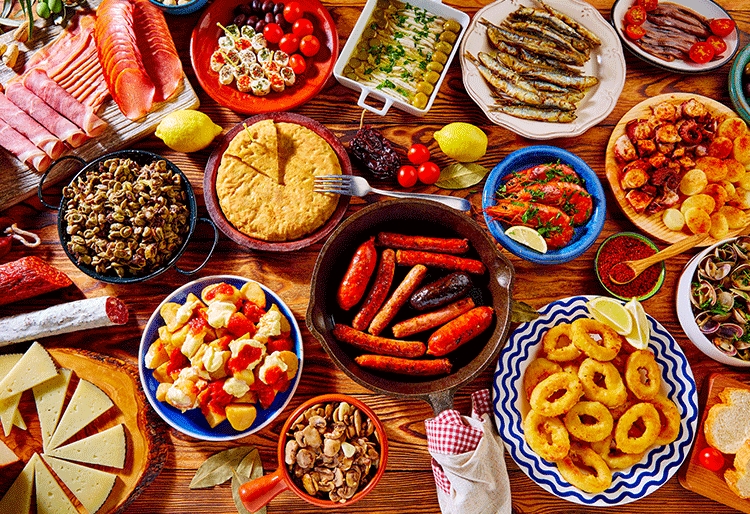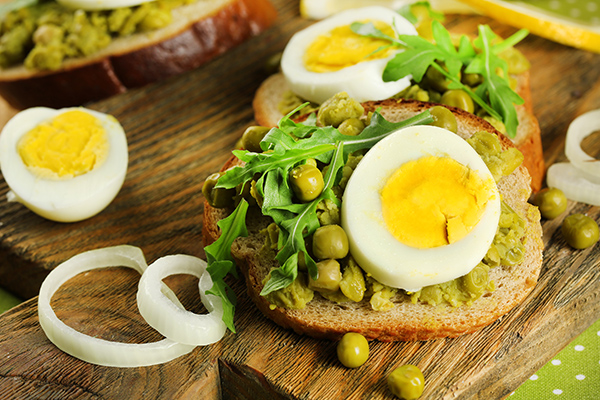Pinchos and Tapas, A very Spanish snack
In our country, the custom of going out for tapas is growing by the day, so much so, that it has become a symbol of Spanish gastronomic culture.
on today's menu
Share

History
It is said that the origin of tapas goes back to the 13th century and the reign of Alfonso X “the Wise”. Due to illness, his doctor prescribed him to take sips of wine and, to avoid the effects of alcohol, he ate small mouthfuls of food to accompany the drink. After his recovery, he ordered the taverns and bars in Castile to serve a portion of food to accompany the wine to avoid it going to peoples’ heads. To begin with, the tapa (‘cover’) was placed over the opening of the jug or the glass, lightly ‘covering’ the vessel, hence the origin of the word. In those days, tapas would consist of a slice of ham, slices of chorizo or other cold meats, and once in a while, cheese was also used.
Definition and varieties
For some time, there has been a debate about the similarities and differences between the terms “pincho”, which is more common in the Basque Country, and “tapa”, the general term used throughout Spain. Finally, the RAE has decided that they are different things. It defines the pincho as a portion of food eaten as an aperitif and which is sometimes pierced with a toothpick.
The main difference is that you need utensils to eat a tapa and they tend to be smaller portions of food than the main dish. And the pincho is generally smaller, has fewer ingredients, and mostly includes a toothpick, or “pincho”, to hold all the ingredients together so you can eat them in one mouthful.
The variety of tapas is enormous and depends largely on the region. For example, in snack bars, they are served with bread as small sandwiches, whereas in other places, they are served in earthenware bowls, and in other places, they may be skewered with toothpicks. Some of the best-known tapas are: pickled anchovies, cured sausage, esgarraet, spiced potatoes, etc.
The custom of going out for tapas
The verb “tapear” (to go for tapas) originates from the custom that exists in many Spanish locations of going out with friends to a bar, eating a snack with a beer or small glass of wine, and then moving on to another bar to try more tapas or pinchos.
This custom has increasingly substituted meals and has become a new way of sharing the gastronomic variety of Spain with your friends and family.
Advice on how to go out for tapas or pinchos
-The best way to tapear is to go out with a small group of people, some 4 or 6, as it is much easier to find seats and go from one bar to another.
-The original way to eat tapas is seated or standing at the bar of the establishment.
-The custom is to eat one or two tapas in each place so that you can discover more locations.
-Another popular custom when going out for pinchos is for each group member to pay for a round. You will have plenty to eat and, in the end, you will spend the same amount of money.
- Above all, enjoy the moment.
Recipes of tapas
PEA, EGG AND MOZARELLA TOASTS

Ingredients ( 4 guests)
- 4 portions of sliced bread
- 500 g fresh peas
- 125 g mozzarella
- 20 ml lemon juice
- 2 portions of egg
- 40 g olive oil
- salt
Preparation
- Shell the peas. Place them in a bowl, crush them and add a little salt, the lemon juice and a good amount of extra virgin olive oil. Crush them well and put aside.
- Cut the bread and toast it. In the meantime, cook the hard boiled eggs.
- Cover the toast with the crushed peas, cut the eggs into halves and place each half onto the toast, and then add a piece of mozzarella. Finish off with salt flakes and serve.






